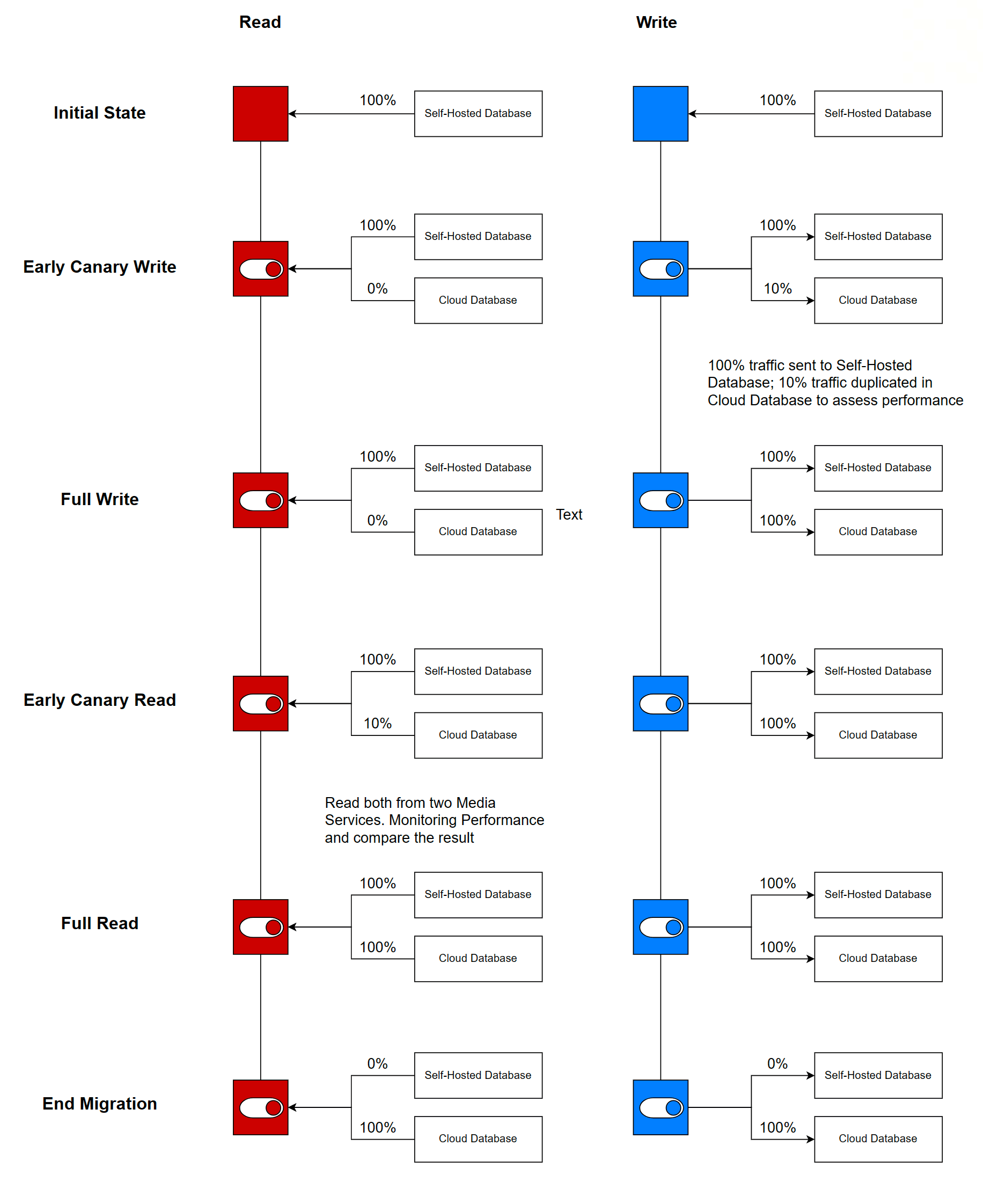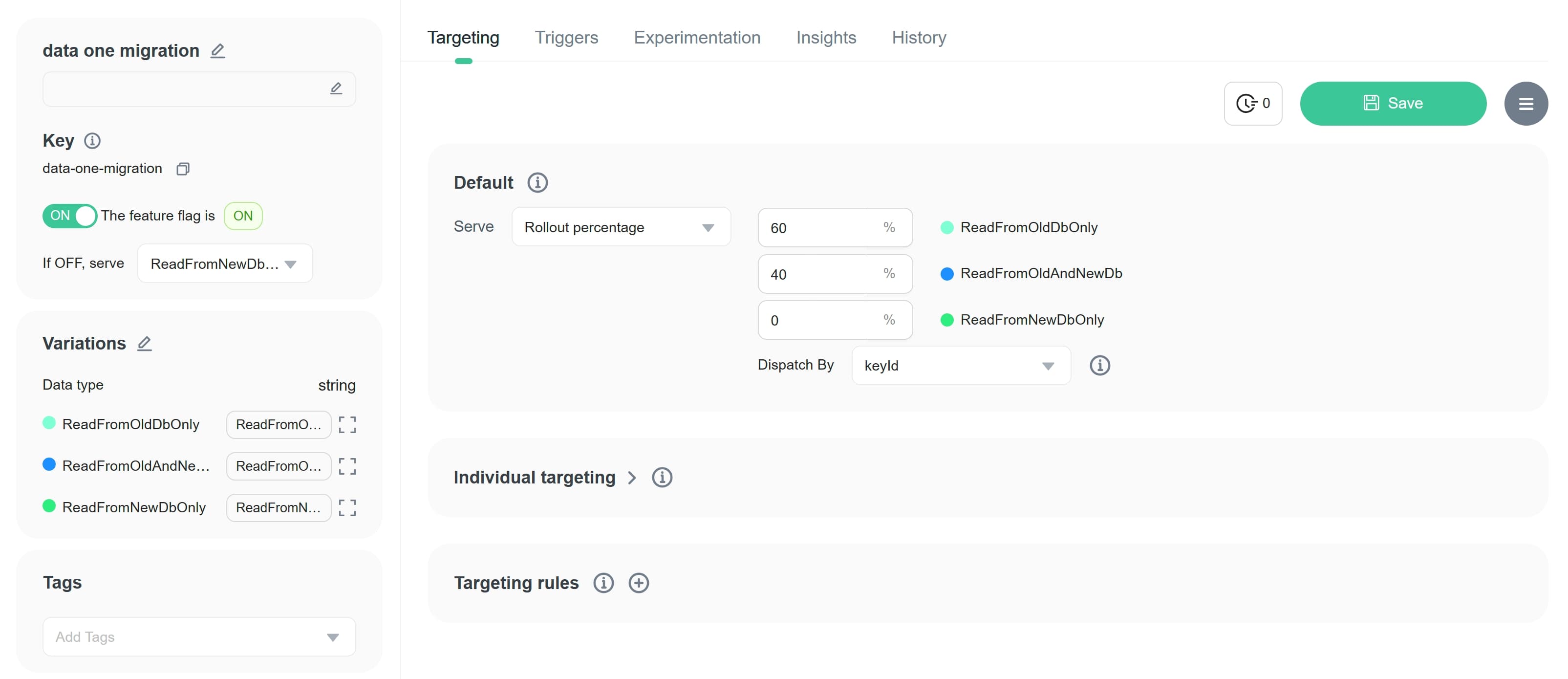Testing Feature Toggles with xUnit
Introduction
Feature Flags (or Feature Toggles) are widely used in software development to enable safer and more frequent feature delivery. We often write a feature flag into a code method and then use this flag to control the method's execution. For example:
public DataModel ReadDataOneAsync(string id)
{
if(_featureFlags.IsEnabled("new-data-store-migration"))
{
DataItem data = _noSqlRepo.Get(id);
return new DataModel(data);
}
else
{
DataItem data = _sqlRepo.Get(id);
return new DataModel(data);
}
}In the example above, the ReadDataOneAsync method retrieves data from either a NoSQL database or a SQL database based on the value of the new-data-store-migration feature flag. If the flag is enabled, the method runs the code to retrieve data from the NoSQL database; otherwise, it runs the code to retrieve data from the SQL database.
You may have already written a unit test for retrieving data from the SQL database. However, with the introduction of the feature flag and a new code path (retrieving from the new NoSQL database), you need to revise the unit test to cover all scenarios.
Here, I will show you a .NET example of how to unit test a method that includes feature flags (opens in a new tab). We will use xUnit as the testing framework.
Scenario Context - Data Migration
Imagine we have an SQL database where we store complex order data in some tables. As the data grows, the performance of the SQL database deteriorates. For this reason, among others, we decide to migrate the order data to a NoSQL database to enhance performance.
To avoid unexpected downtime and ensure the new data store functions as expected, we opt for an incremental migration. This involves testing the migration in production and gradually migrating the data using a dual-write/dual-read methodology.

We use a feature flag to control the data migration. Suppose we've already tested the migration process for writing data. The code below provides a more detailed example of the ReadDataOneAsync method (for reading data) mentioned earlier:
// Method to be unit tested
public async Task<OneModel?> ReadDataOneAsync(string id)
{
// function for retriving data (name is one) from sql database
var f1 = async () =>
{
var one = await _oneRepository.GetByIdAsync(id);
return one == null ? null : new OneModel(one);
};
// function for retriving data (name is one) from noSql database
var f2 = async () =>
{
var one = await _oneNoSqlRepository.GetByIdAsync(id);
return one == null ? null : new OneModel(one);
};
// function for comparing the result of two functions above
Action<OneModel?, OneModel?> aCompare = (r1, r2) =>
{
// some code for comparing the result of two functions above
// if the result is not equal, log an error
};
// executing the migration process
return await FbDbMigration<OneModel?>.MigrateAsync(f1, f2, _fbClient, "data-one-migration", aCompare);
}// Method which is used to control the migration process
public async static Task<T> MigrateAsync(
Func<Task<T>> a1, Func<Task<T>> a2, IFbClient featureFlags,
string ffKey, Action<T, T> compare, int timeOut = 10000)
{
// get the migration state from feature flag
var migrationState = featureFlags.MigrationState(ffKey);
if (migrationState == MigrationEnum.ReadFromOldDbOnly)
return await Task.Run<T>(a1);
else if (migrationState == MigrationEnum.ReadFromNewDbOnly)
return await Task.Run<T>(a2);
else
{
using var cts = new CancellationTokenSource();
var t1 = Task.Run<T>(a1);
cts.CancelAfter(timeOut);
var t2 = Task.Run<T>(a2, cts.Token);
var parallelTasks = await Task.WhenAll<T>(t1, t2);
compare(parallelTasks[0], parallelTasks[1]);
return parallelTasks[0];
}
}In the code above, you will see the feature flag data-one-migration includes 3 variations: ReadFromOldDbOnly, ReadFromNewDbOnly, and ReadFromBothDbs. When the feature flag is set to:
ReadFromOldDbOnly, the method reads data from the SQL database.ReadFromNewDbOnly, the method reads data from the NoSQL database.ReadFromBothDbs, the method reads data from both databases and compares the results.
This set of feature flag variations for the migration is widely used in the migration process.
When reading data from both databases, if the data from the NoSQL database differs from the data in the SQL database, the method logs an error message. Alternatively, if the execution time for reading data from both databases exceeds the timeout, the method returns the default value.
To make the example more straightforward, I've omitted the other exception handling code.
The migration transition process will be:
- Initially, the feature flag is set to
ReadFromOldDbOnly. - We will progressively set the feature flag to
ReadFromBothDbsuntil we are confident that the data in the NoSQL database is consistent with the data in the SQL database.

- Then we will progressively set the feature flag to
ReadFromNewDbOnlyuntil no data is read from the SQL database. - We will remove the feature flag and the code that reads data from the SQL database.
In the unit test, we should aim to cover all scenarios of the ReadDataOneAsync method. We will use xUnit to write the unit test.
Use xUnit to test all code paths
In the ReadDataOneAsync method, we used three injected services:
_oneRepository, a repository that is responsible for reading data from the SQL database._oneNoSqlRepository, a repository that is responsible for reading data from the NoSQL database._fbClient, FeatBit feature flag serivce._logger, a logger service.
We need to mock these services and the logger to test the method. We use Moq (opens in a new tab) to mock the services and the logger.
In the unit test, we need to cover three code path for different feature flag variations, I use CombinatorialData to generate test cases. Please watch the code below and read the comments carefully to understand the test cases.
[Theory, CombinatorialData]
public async void ReadDataOneAsyncTest(
// Use `CombinatorialData` to set the unit test cases. This unit test
// will execute three times, each time with a different feature flag value.
[CombinatorialValues("ReadFromOldDbOnly", "ReadFromNewDbOnly", "ReadFromOldAndNewDb")]string ffValue,
[CombinatorialValues("not-important")] string oneId)
{
// Use `Mock.Setup` to mock the `IFbClient` service and set the return value for the `StringVariation` method.
var mockFbClient = new Mock<IFbClient>();
mockFbClient.Setup(fb => fb.StringVariation("data-one-migration", It.IsAny<FbUser>(), "")).Returns(ffValue);
// Use `Mock.Setup` to mock the `IOneNoSqlRepository` and `IOneRepository` services and set the return value for the `GetByIdAsync` method.
var mockNoSqlRepo = new Mock<IOneNoSqlRepository>();
mockNoSqlRepo.Setup(r => r.GetByIdAsync(oneId)).ReturnsAsync(new OneNoSql() { Id = oneId });
var mockSqlRepo = new Mock<IOneRepository>();
mockSqlRepo.Setup(r => r.GetByIdAsync(oneId)).ReturnsAsync(new One() { Id = oneId });
// Mock a logger service
using ILoggerFactory factory = LoggerFactory.Create(builder => builder.AddConsole());
ILogger<DataService> logger = factory.CreateLogger<DataService>();
var ds = new DataService(logger, mockSqlRepo.Object, mockNoSqlRepo.Object, mockFbClient.Object);
var ro = await ds.ReadDataOneAsync(oneId);
Assert.Equal(oneId, ro?.Id);
}As shown in the code above:
- Use
CombinatorialDatato set the unit test cases. This unit test will execute three times, each time with a different feature flag value:ReadFromOldDbOnly,ReadFromNewDbOnly, andReadFromBothDbs. - Use
Mock.Setupto mock theIFbClientservice and set the return value for theStringVariationmethod. - Use
Mock.Setupto mock theIOneNoSqlRepositoryandIOneRepositoryservices and set the return values for their respectiveGetByIdAsyncmethods.
After running (or debugging) the test, you will see the testing results below. The test method has been run three times.

The objective of this code is to demonstrate how to test a method that includes feature flags. The code is not perfect; it may lack test cases or not good look code. Please feel free to point out any flaws and help us improve the article.
Code Source
The feature flag code and service mentioned above used the FeatBit service and FeatBit's .NET server SDK (opens in a new tab). You can visit their official website (opens in a new tab) and GitHub repository (opens in a new tab) for more information.
The code demonstrated in the article is also available in FeatBit's sample project (opens in a new tab).